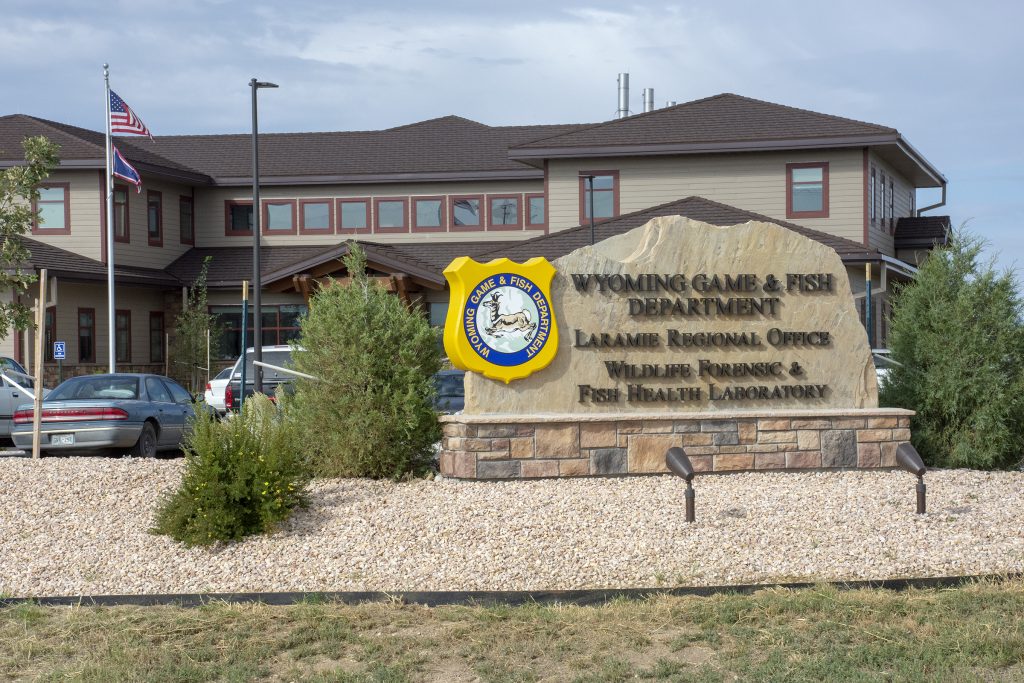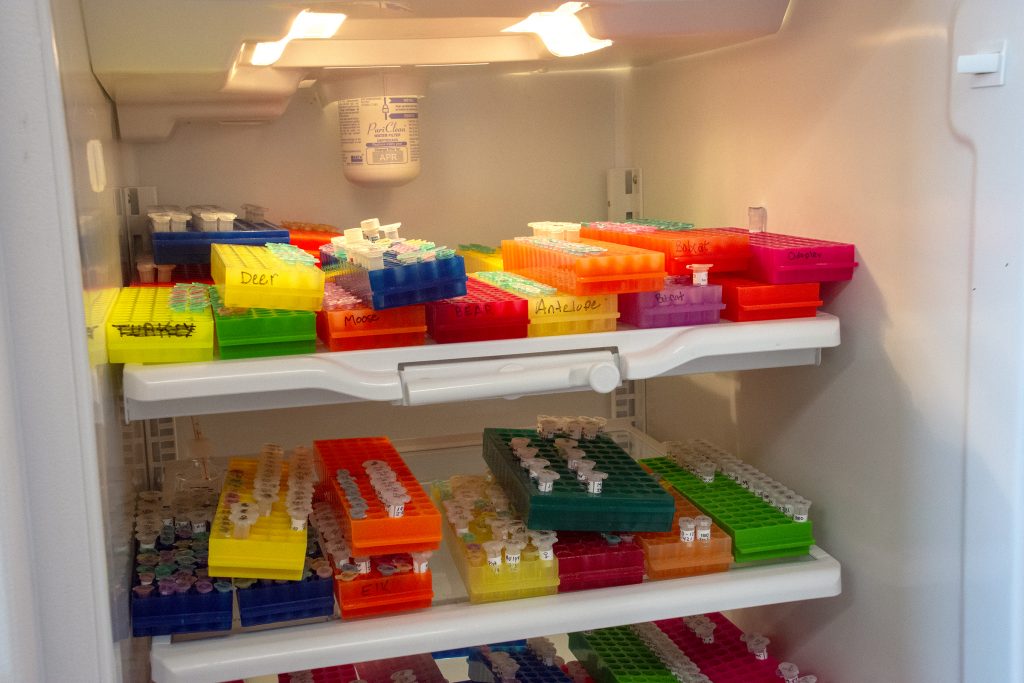Colorado wildlife officers turn to forensic scientists to identify aggressive animals, poachers

Courtesy Colorado Parks and Wildlife
FRISCO — Colorado Parks and Wildlife often has the unfortunate job of having to capture animals involved in attacks on humans and investigate wildlife violations like poaching.
The stakes are frequently high in these cases, whether it’s an animal’s life on the line, or simply trying to stop criminal activity from bad actors in the area.
But Colorado’s wildlife can have widespread ranges, and it can be difficult to discern one bear from another, or to connect illegal hunting activities with suspects. So what is CPW to do?
One solution is forensic science — more specifically forensic DNA analysis — that helps to confirm whether or not officers have captured the right animal after an attack, and can provide hard evidence in the prosecution of criminals.
When CPW officers need help, the agency frequently turns to the Wyoming Game and Fish Wildlife Forensic & Fish Health Laboratory in Laramie.

Courtesy Colorado Parks and Wildlife
The lab underwent a state-of-the-art upgrade last summer, and currently provides forensic analysis for positive identification in wildlife attack and poaching cases for 12 different states — soon to be 14 as Kansas and Utah work to formalize contracts with the lab — including Colorado. Officials say the lab serves as a valuable tool in helping to prosecute offenders and protect Colorado’s wildlife.
One such case arose last month. On August 21, a mountain lion attacked an 8-year-old boy in Bailey, who sustained serious injuries and was hospitalized overnight as a result of the attack. The next day, as wildlife officers were searching for the responsible animal, two other lions killed and were discovered feeding on a domestic goat. USDA Wildlife Services euthanized both animals, and DNA samples were sent in to Wyoming lab for analysis — proving that one of the lions was undoubtedly responsible for the attack on the boy.
“The mountain lion that was guilty in the case had goat and human DNA on its paws,” said Tasha Bauman, Wyoming’s wildlife forensic program manager. “Our numbers on this one were really very high for the likelihood ratio of a match, it was less than 1 in 27 billion its genotype would be reproducible.”
Once CPW officers get confirmation, they can stop ongoing efforts to find the animal, such as removing traps from the area and calling off dog teams attempting to sniff out the offender.
Bauman, one of just 28 certified wildlife forensic scientists in the entire world — and one of two in the Wyoming lab — said the lab sees between 70 and 80 cases a year from the states they’re contracted to do work for, including about five to 10 wildlife attack cases a year.
“I have worked 74 bear and mountain lion attacks cases in my career,” said Bauman of her 12 years with the lab. “I’ve worked approximately 800 total wildlife cases from all the states we work for and the bulk of those come from Wyoming, Montana and Colorado.”
Colorado’s current contract with the lab runs through 2021, and from June 2018 through May 2019, Colorado Parks and Wildlife has sent in 14 law enforcement cases resulting in 99 forensic samples and 3,086 analytical tests being run off those cases.
Bauman said the testing is highly objective, always resulting in either a match or not. The lab runs DNA tests similar to how FBI or CBI analysts would during a regular criminal investigation, but looking for different primers for wildlife instead of humans. This process can help determine if an animal was responsible for an attack, and can help tie poachers to evidence discovered on scene. Poaching activities often require other efforts from organizations like the Colorado Bureau of Investigation and the U.S. Fish & Wildlife Service.
“We will run it through species identification using protein analysis,” said Bauman. “We will tests for specific proteins to determine what species it is. If it is a sample that is not protein heavy, like a bone sample or a sample that is producing weird results on our protein test, we’ll run it through DNA sequencing.
“Once we have all of our species figured out, we’ll extract the DNA and then we can set up sex ID and microsatellite matching, where we can match two items together, like a gut pile in a field to the meat in a freezer, or to the head on somebody’s wall.”
The Wyoming lab can process forensic analysis on 13 different species of wildlife: elk, moose, mule deer, whitetail deer, bighorn sheep, mountain goats, black bears, pronghorn, bobcats, mountain lions, grizzly bears, turkey and sage grouse.
The lab also keeps a regional database of DNA samples on various species to help determine how likely it is another animal in the area — other than the sample they’re analyzing — could return a similar match.

Courtesy Colorado Parks and Wildlife
“For our database samples, when we run DNA matching cases we have to have a statistic likelihood ratio to say how likely the animal we tested is to be reproduced in the wild,” said Bauman. “We look at our regional database, look at the different alleles in those databases for each one of those animals and then we run some math to say an animal is less than 1 in 100 billion to be reproduced in that population. It just gives a statistical weight to the match that we have made.”
For wildlife officials in Colorado — which has seen just under 50,000 wildlife violations in the last decade — having a tool like the Wyoming Forensics Lab can often make the difference in helping to preserve the state’s wildlife resources.

Support Local Journalism

Support Local Journalism
As a Summit Daily News reader, you make our work possible.
Summit Daily is embarking on a multiyear project to digitize its archives going back to 1989 and make them available to the public in partnership with the Colorado Historic Newspapers Collection. The full project is expected to cost about $165,000. All donations made in 2023 will go directly toward this project.
Every contribution, no matter the size, will make a difference.





